This document discusses typed arrays, which provide an efficient way to handle binary data in the browser. Typed arrays allow passing binary data directly to APIs like WebGL through a typed view into an ArrayBuffer. This avoids inefficiencies of passing data through regular JavaScript arrays. The document covers creating and using typed array views, the DataView for heterogeneous data, browser and third-party APIs that utilize typed arrays, the history and design considerations behind typed arrays.
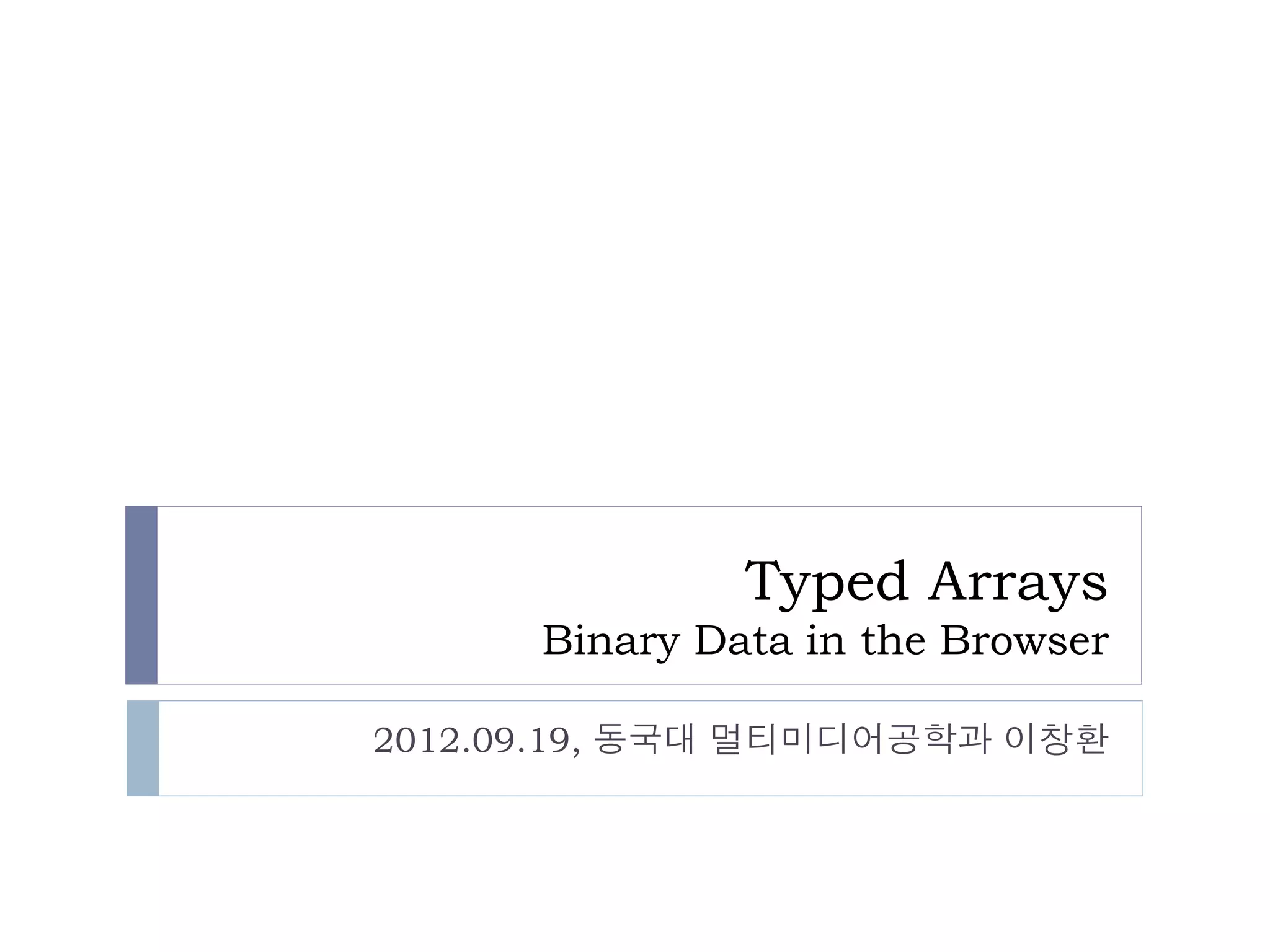
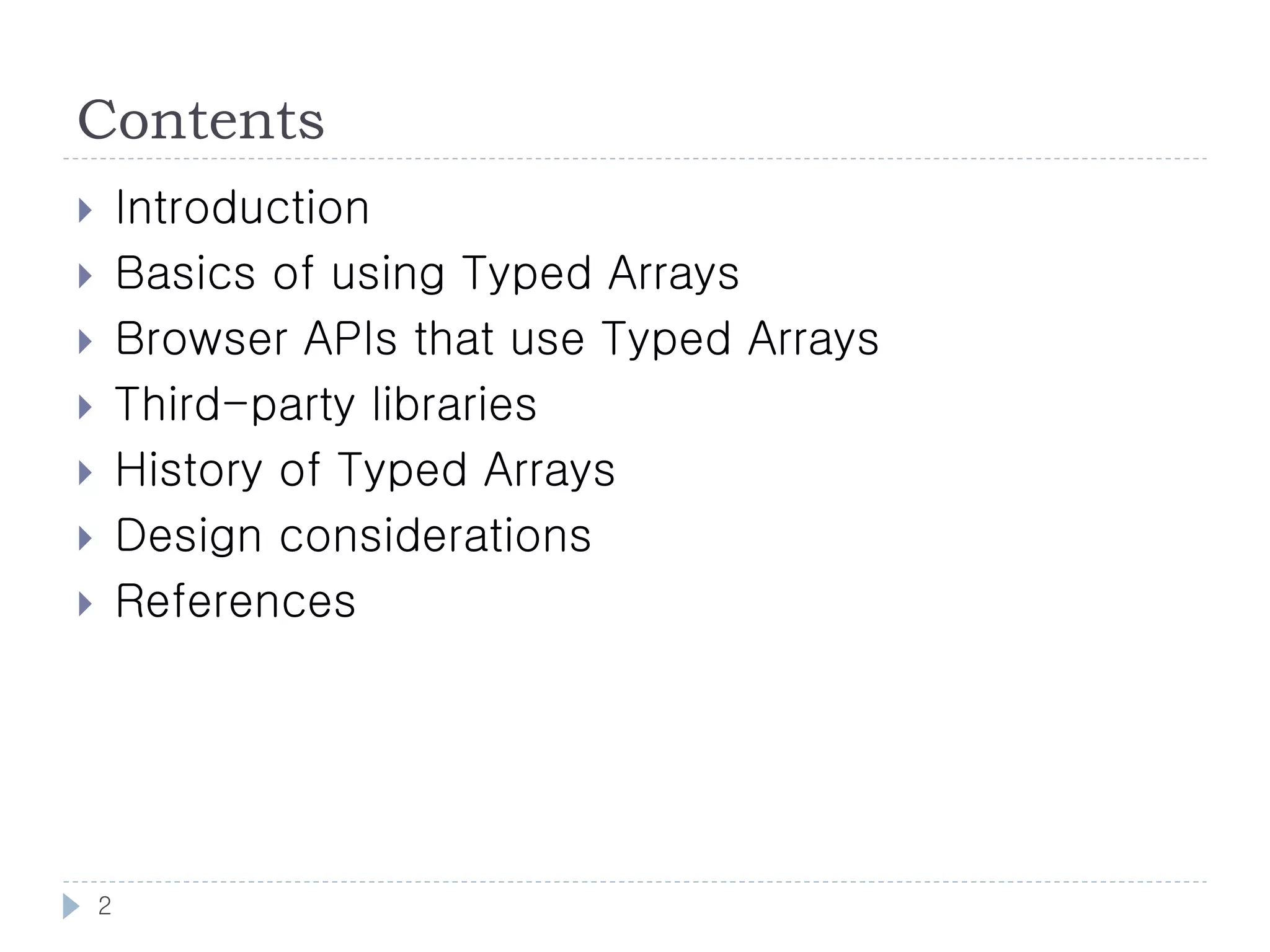
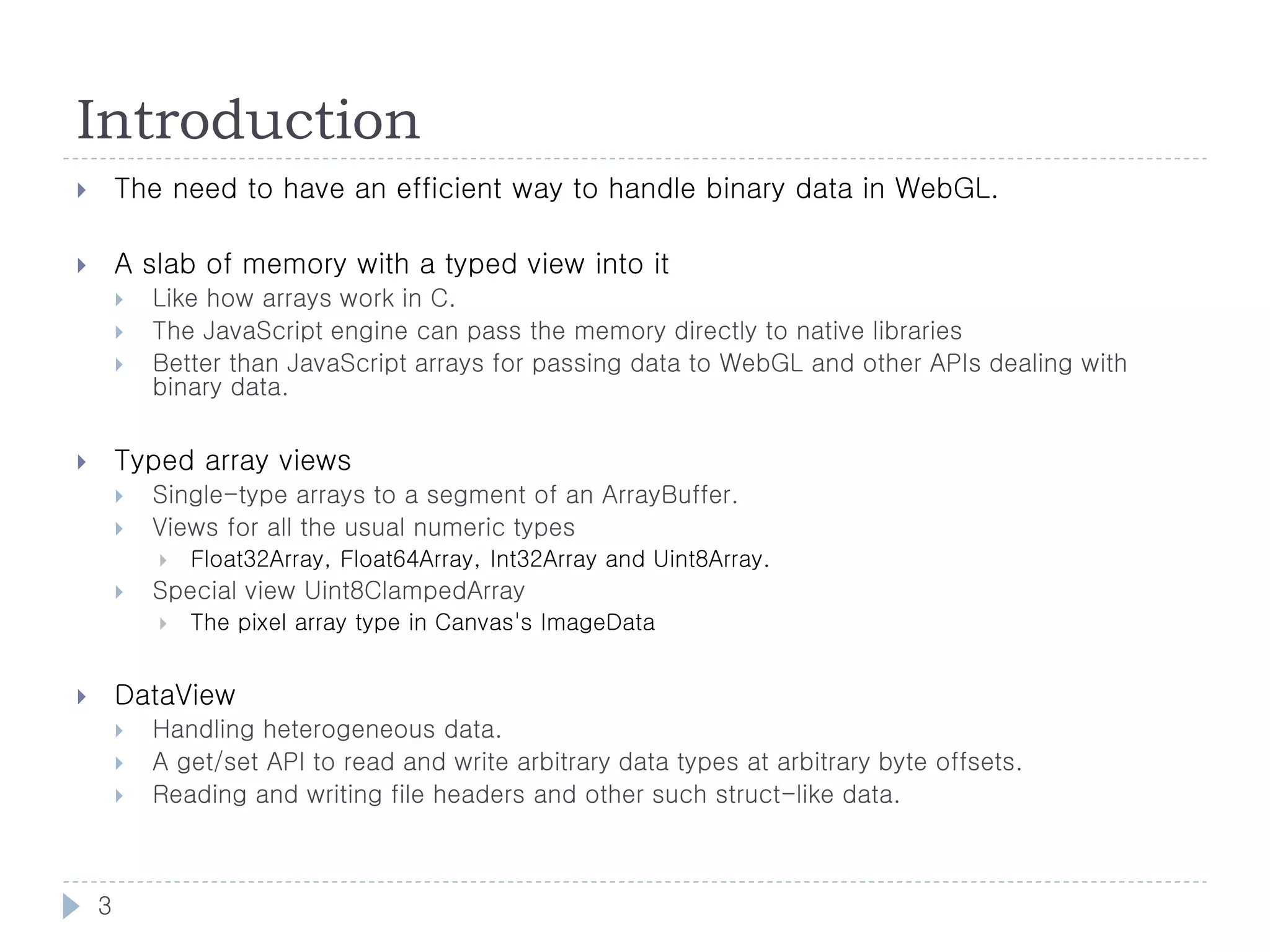
![Introduction
JavaScript Native
Single Value: 123 Value: 123
Value Type: integer
[0] Value: 123 [0]:123
[1] Type: integer [1]:123
[2] [2]:123
Value: 123
Values [3]
Type: integer [3]:123
in [4] [4]:123
[5] … [5]:123
Array … …
[n-2] Value: 123 [n-2]:123
[n-1] Type: integer [n-1]:123
4](https://image.slidesharecdn.com/html5kig-typedarrays-120918141315-phpapp01/75/W3C-HTML5-KIG-Typed-Arrays-4-2048.jpg)
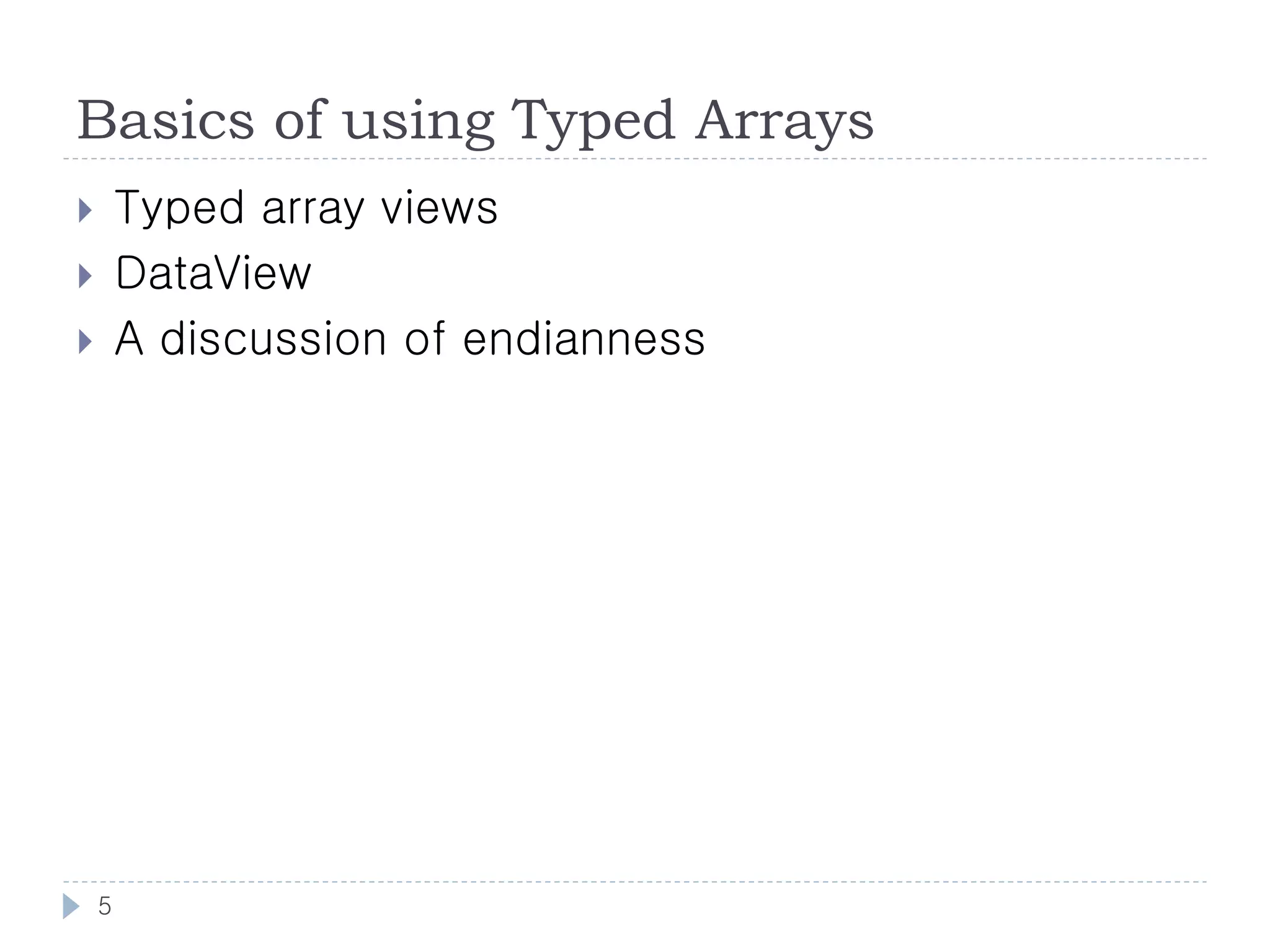
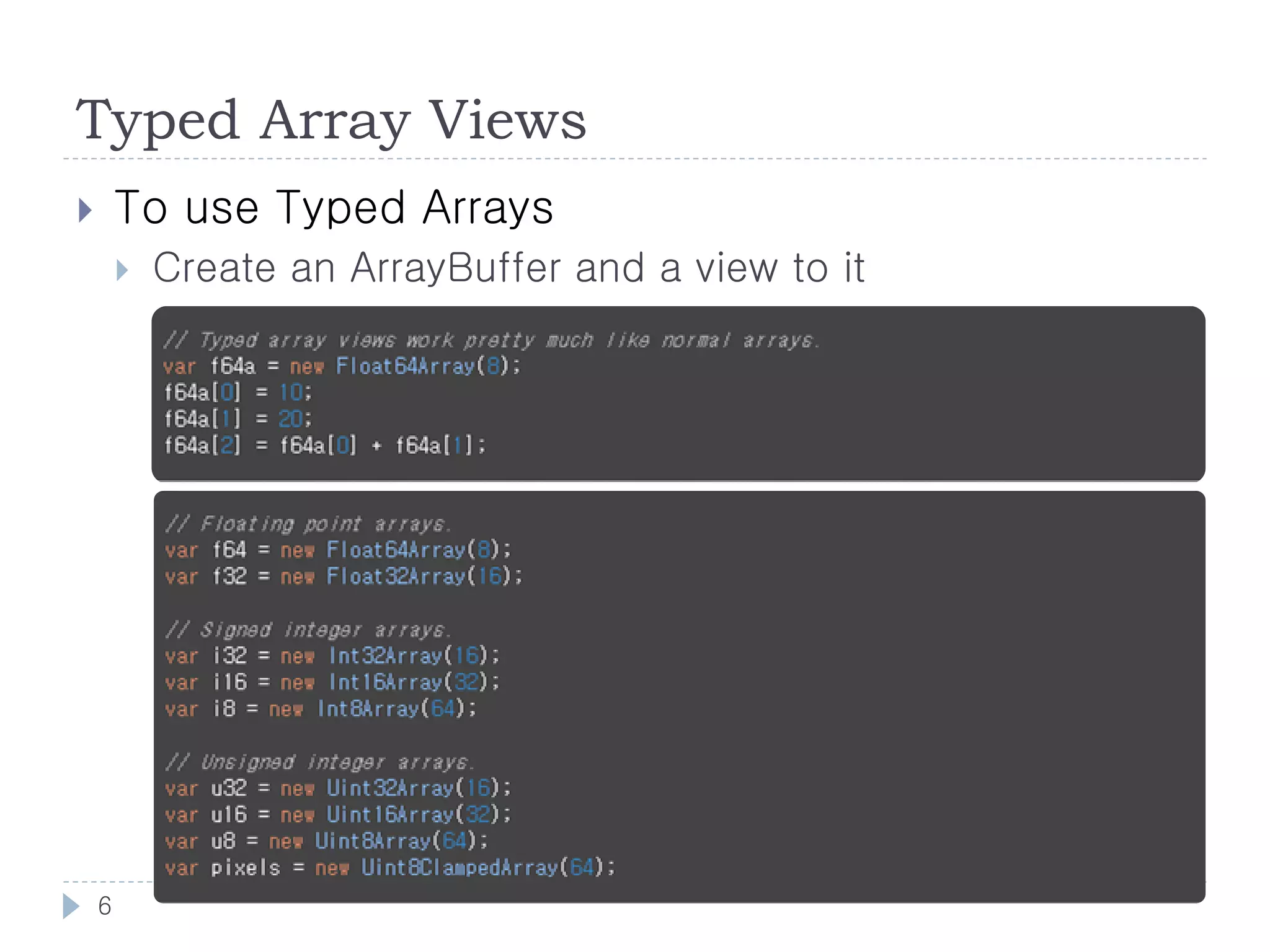
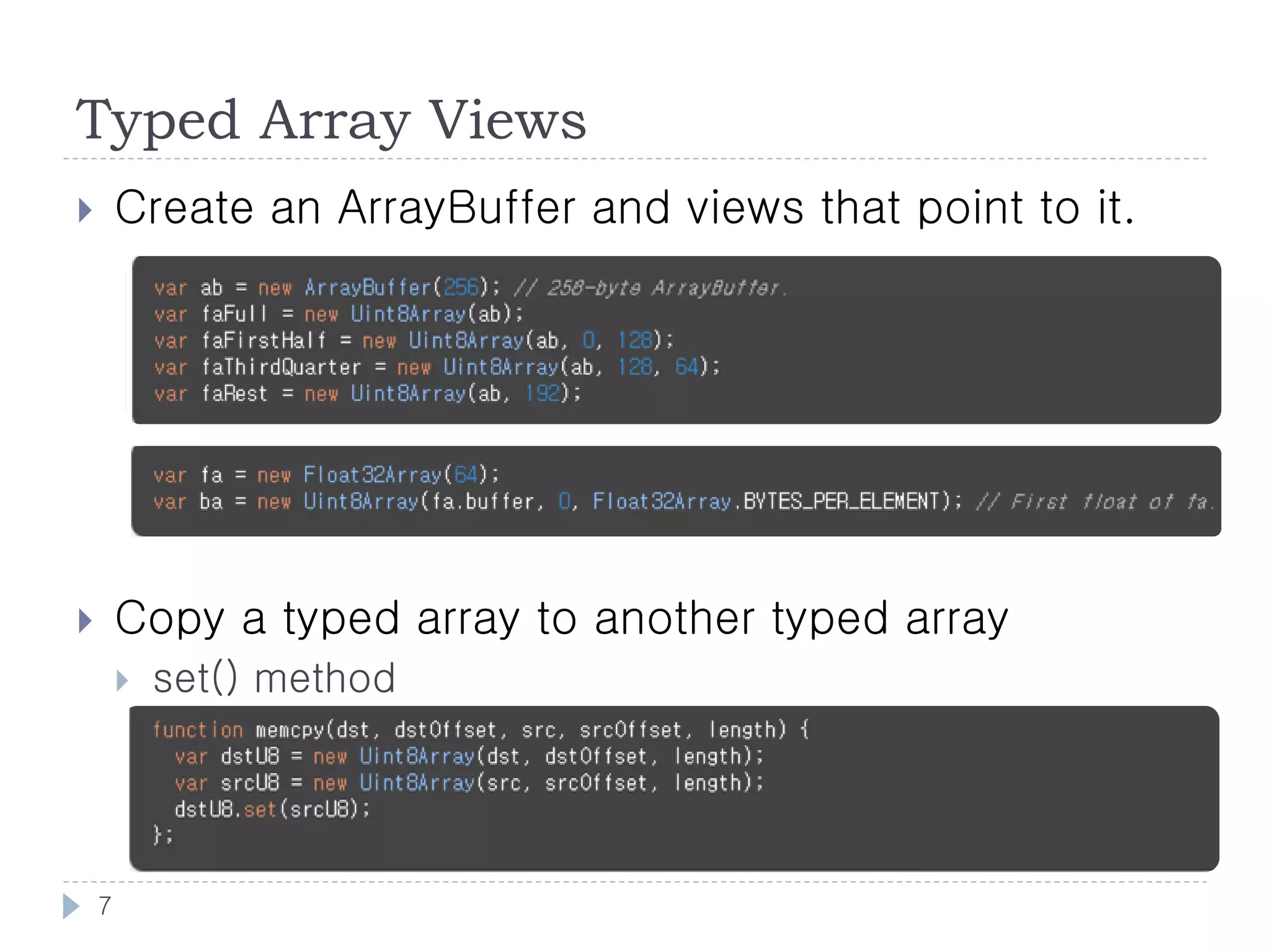
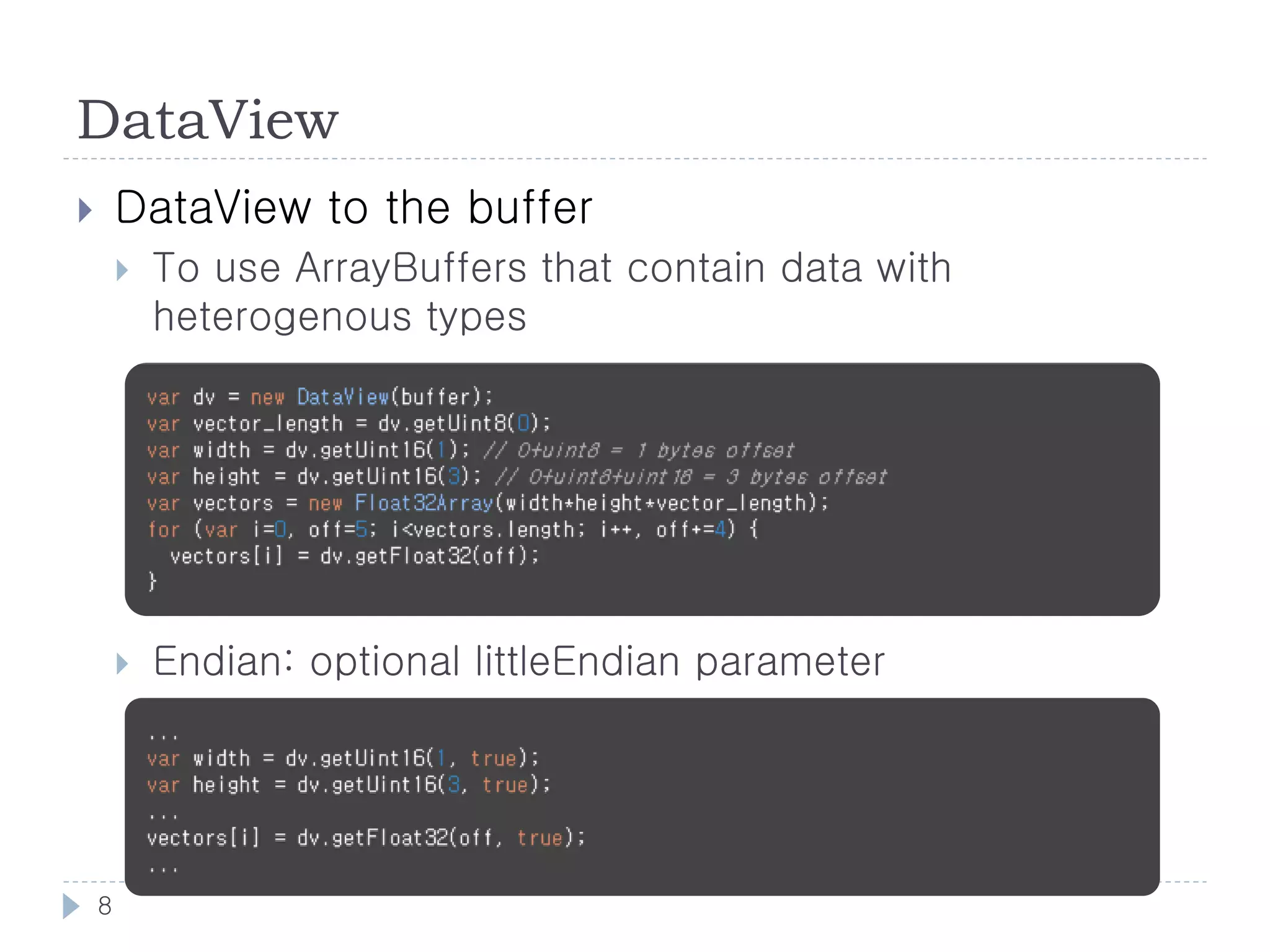
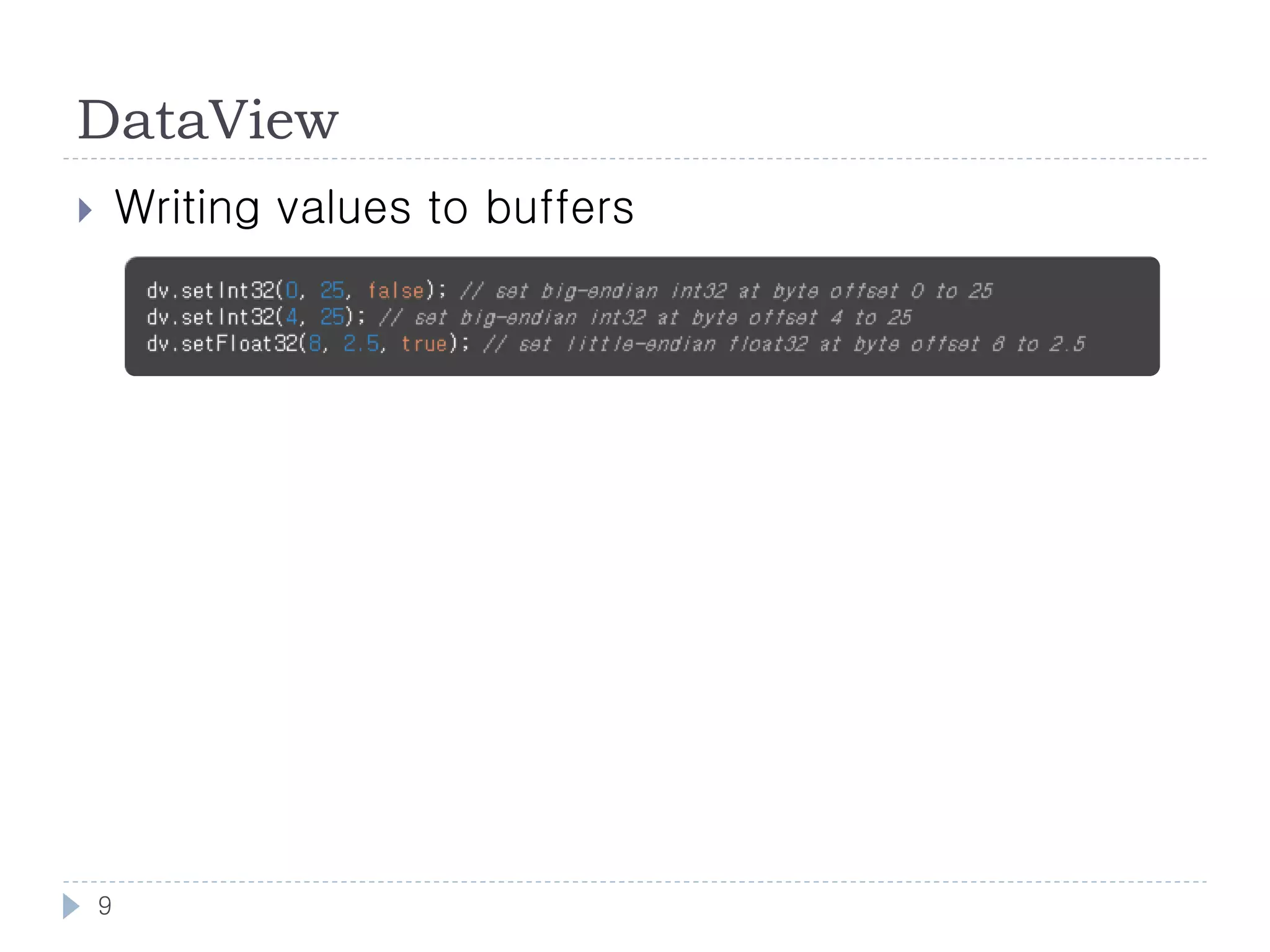
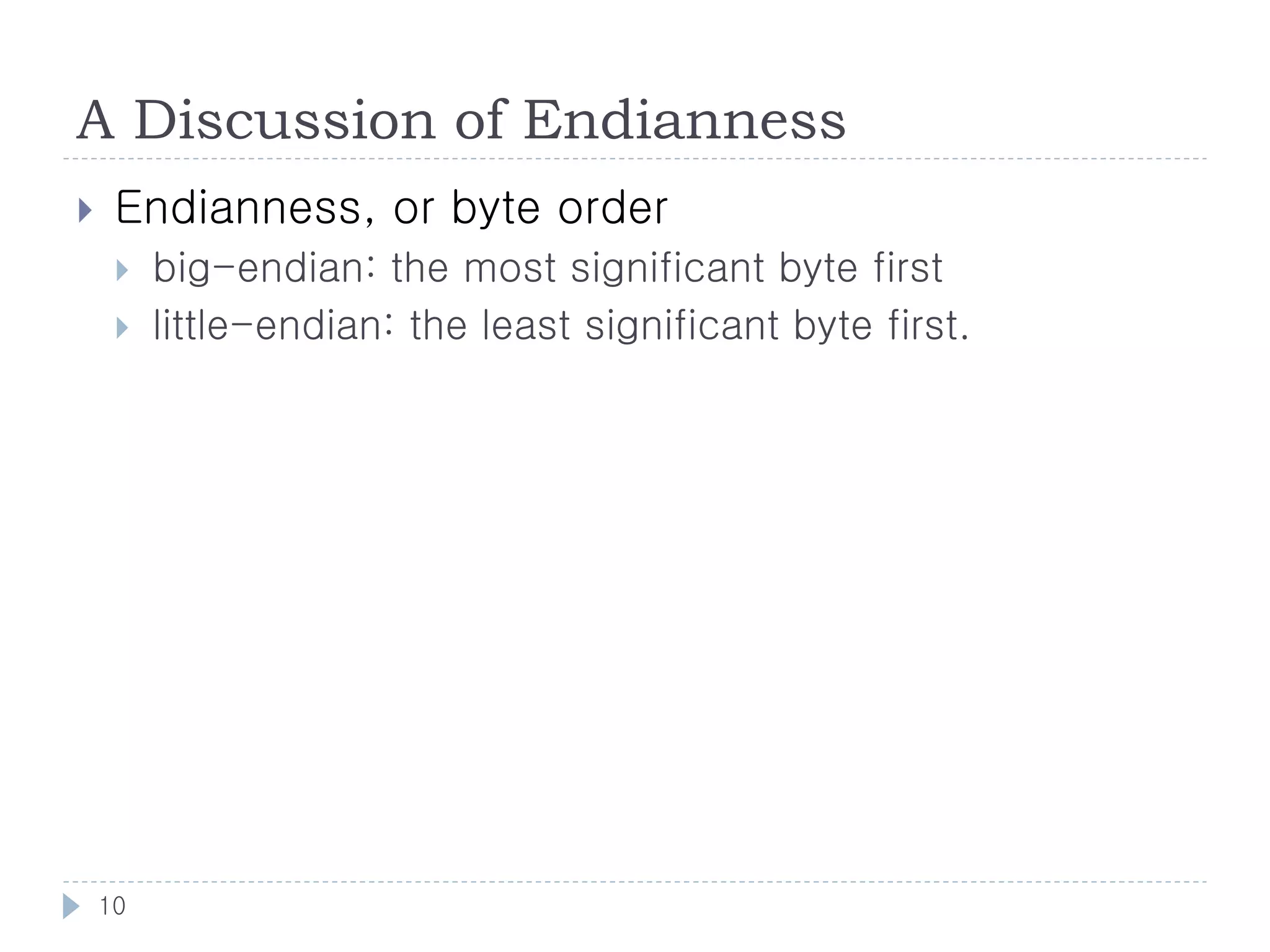
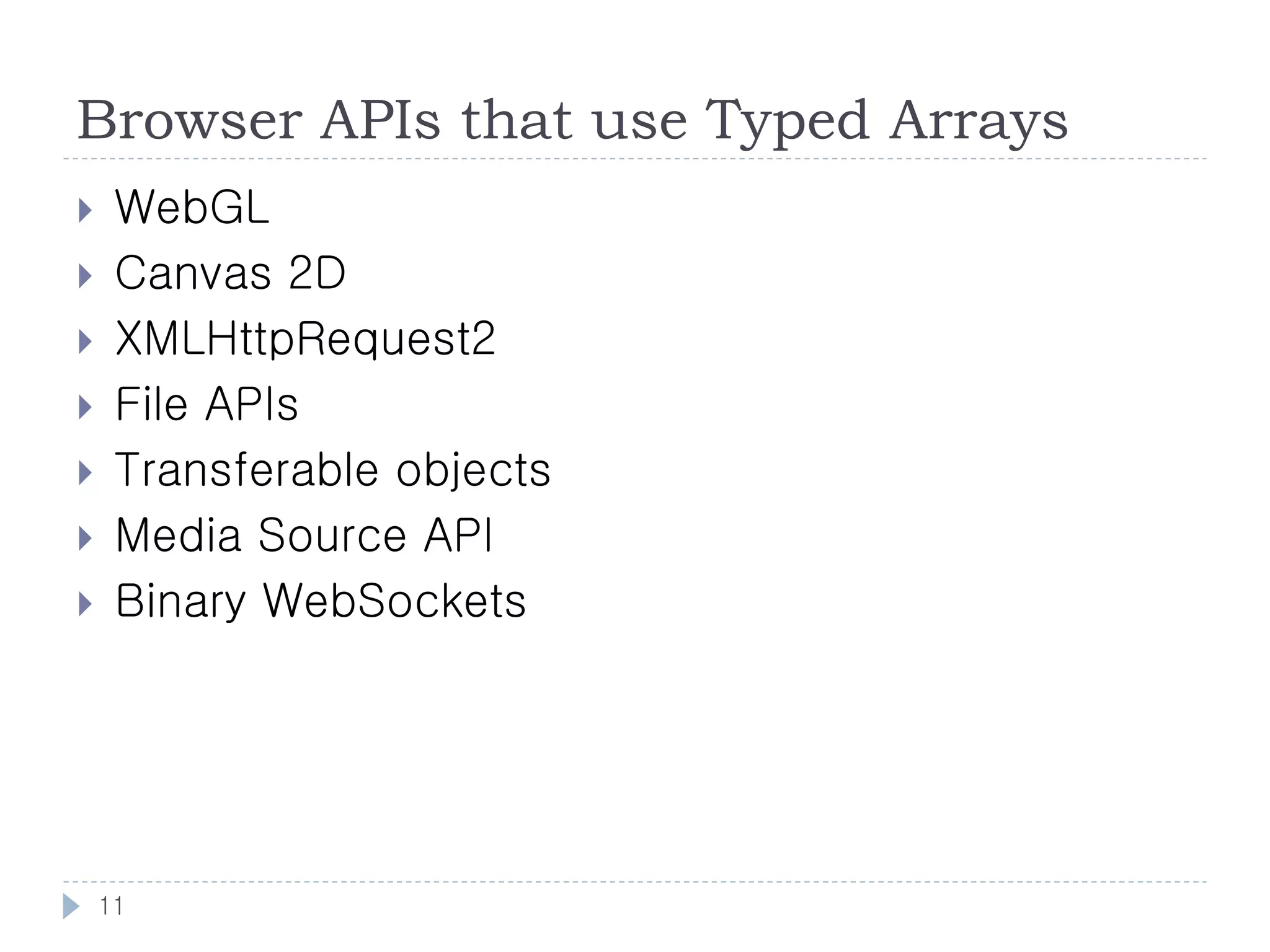
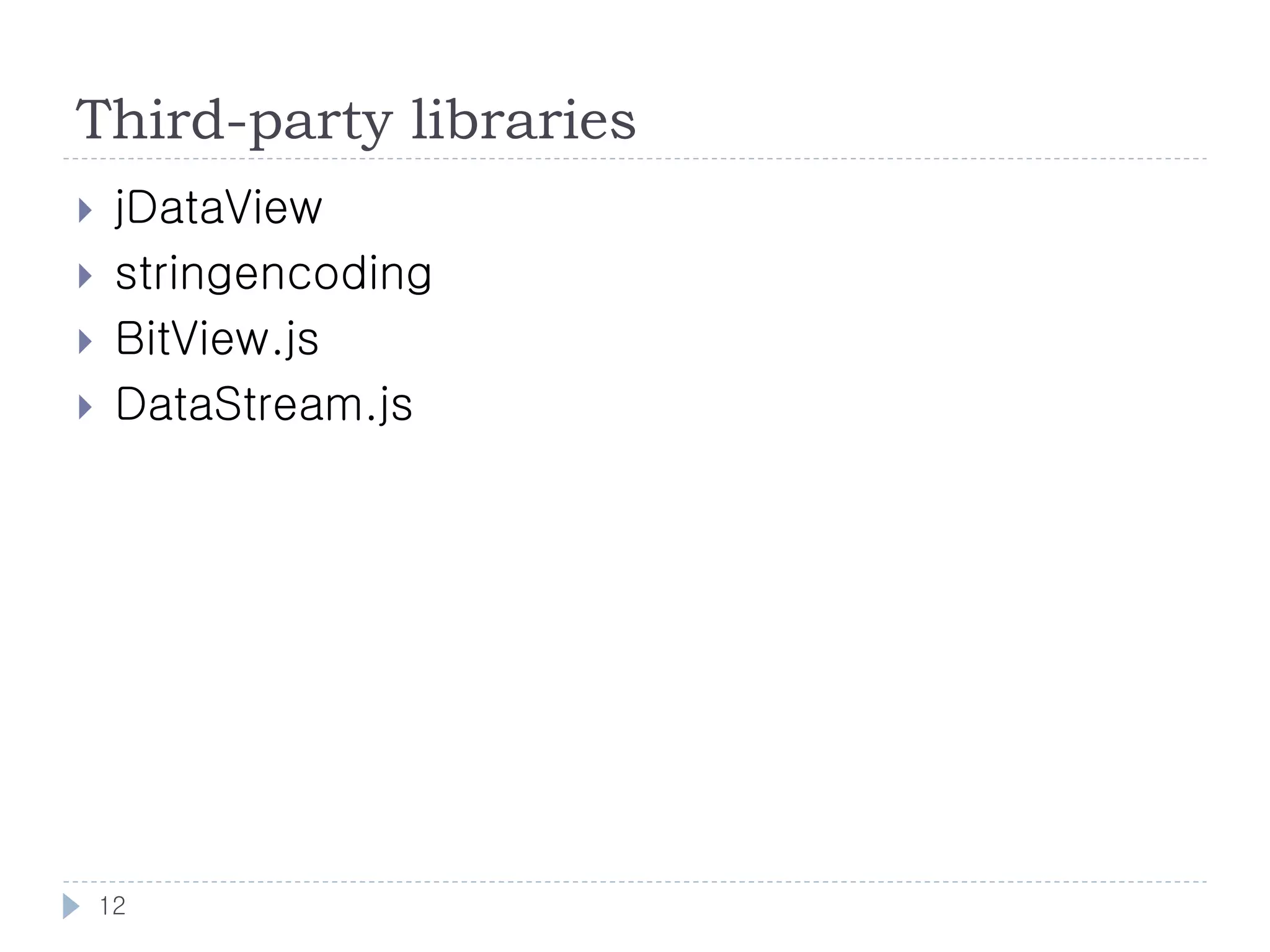
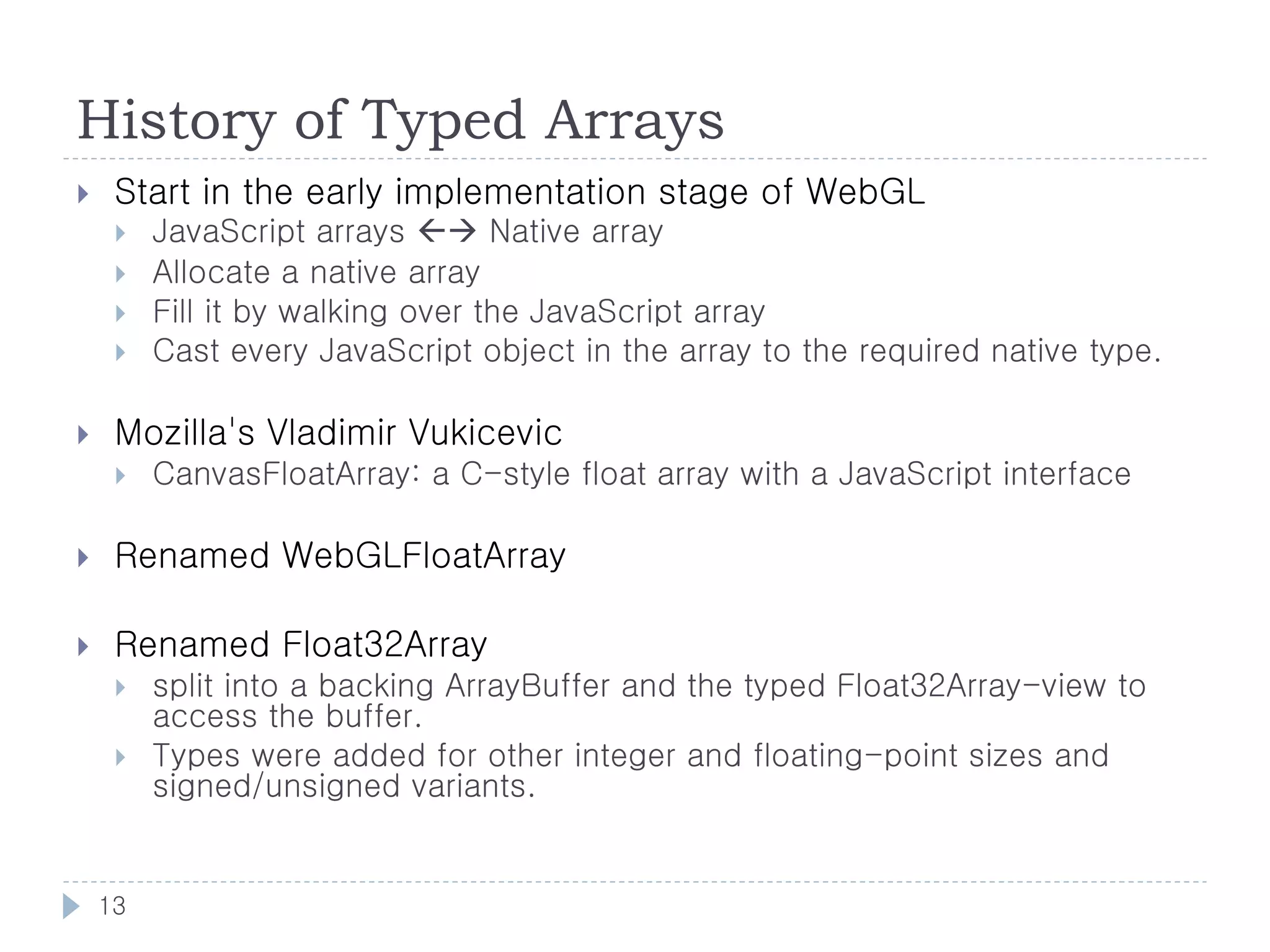
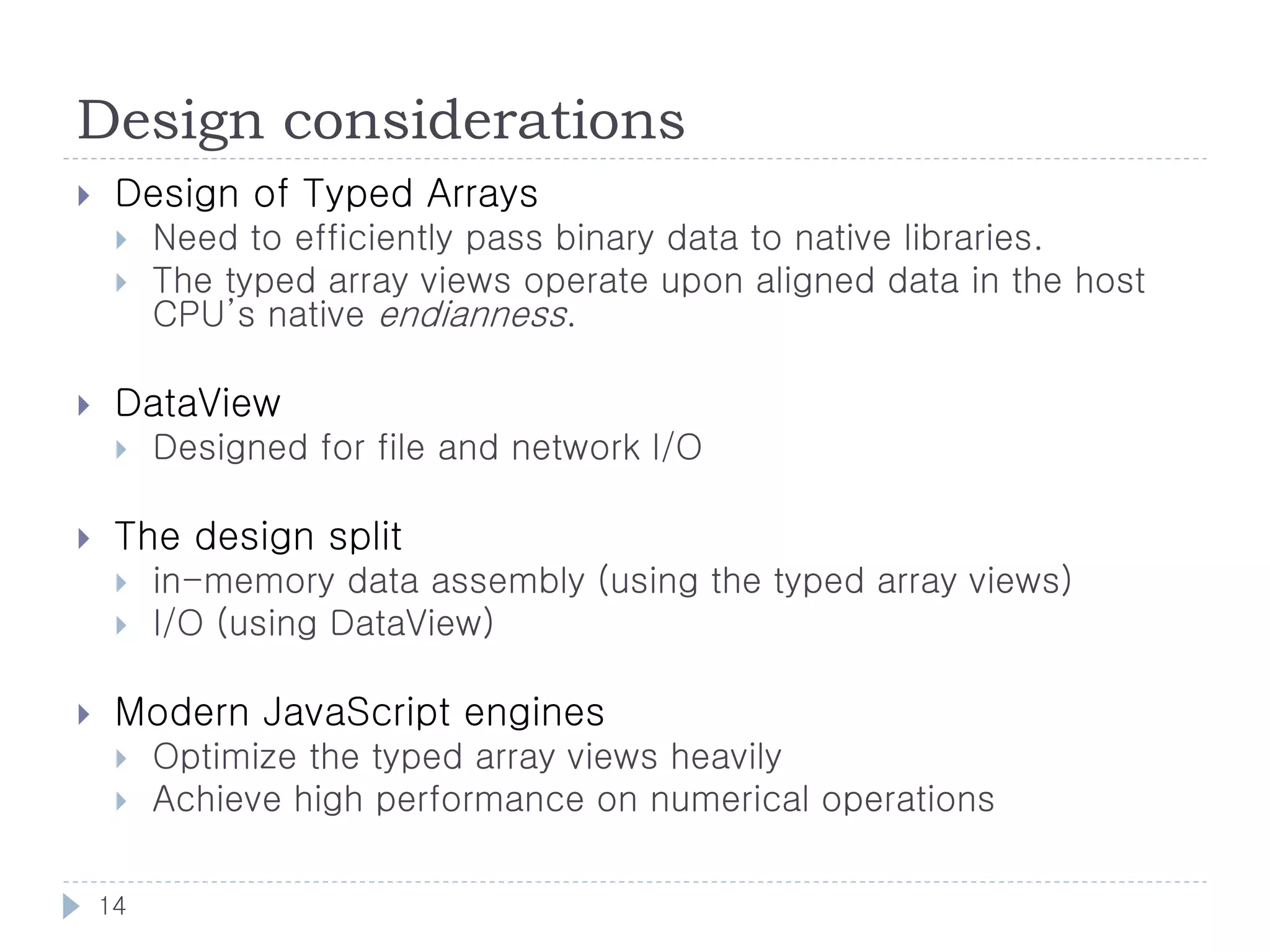
![References
[1] http://www.khronos.org/registry/typedarray/specs/latest/
[2] https://developer.mozilla.org/en/JavaScript_typed_arrays
[3] http://blogs.msdn.com/b/ie/archive/2011/12/01/working-
with-binary-data-using-typed-arrays.aspx
[4] http://weblog.bocoup.com/javascript-typed-arrays/
[5] http://blog.n01se.net/?p=248
[6] http://ie.microsoft.com/testdrive/HTML5/TypedArrays/
[7] TYPED ARRAYS: BINARY DATA IN THE BROWSER,
http://www.html5rocks.com/en/tutorials/webgl/typed_arrays/
15](https://image.slidesharecdn.com/html5kig-typedarrays-120918141315-phpapp01/75/W3C-HTML5-KIG-Typed-Arrays-15-2048.jpg)